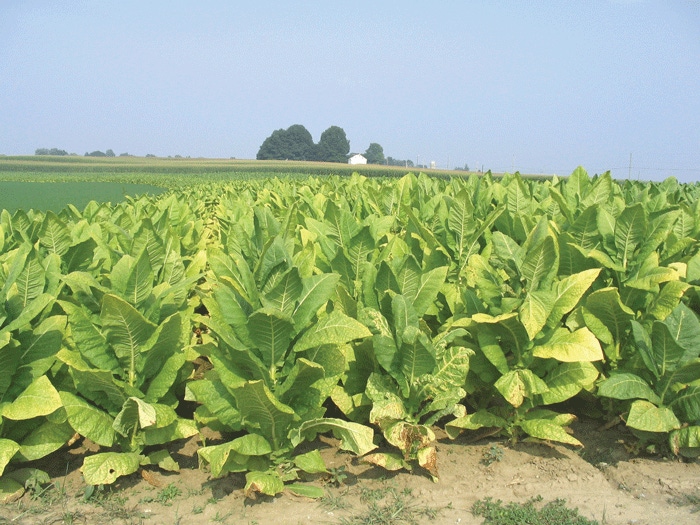July 19, 2011

To achieve high quality, cured leaf, tobacco producers must intensively manage nutrient inputs.
The best way to do this is with a test known as plant tissue analysis. This quick and inexpensive test, which is available from the Agronomic Services Division of the North Carolina Department of Agriculture and Consumer Services, gives growers a way to monitor nutrient needs throughout the season and also schedule harvest to coincide with optimal ripeness.
As a monitoring tool, tissue testing is especially useful when deciding whether to replace nitrogen, potassium or sulfur after leaching rains. For this purpose, a good tissue sample consists of the most recent mature leaves (MRMLs) taken from eight to 12 representative areas throughout the field. The MRML is usually the third to fifth leaf from the growing point.
Brenda Cleveland, chief of the division’s Plant/Waste/Solution/Media Section, encourages growers to pay particular attention to nitrogen fertilization.
“Nitrogen affects leaf quality in many ways,�” Cleveland said.
“Excess nitrogen fosters insect problems, increases sucker growth and extends curing time.
“Also, when tobacco receives more than the recommended maximum of 80 pounds nitrogen per acre, maturity can be significantly delayed. When this happens, crops may still be in the field, and at risk, during the September hurricane season. Monitoring nitrogen levels in plant tissue is one way to avoid many of these problems.”
Harvest benefits
At harvest, tissue analysis can help maximize yields and grades from desirable stalk positions. Producer contracts specify as many as five stalk positions, so several different harvest times have to be scheduled.
NCDA&CS recommends using a tissue test to ensure optimal leaf ripeness before each harvest date.
The sampling procedure used when testing for ripeness is more targeted. Leaves are collected from the appropriate stalk position from each of 12 representative plants about one week before the intended harvest.
When you plan to harvest lower leaves, plant tissue nitrogen should be at 1.3 to 1.75 percent. For middle leaves, the recommended range is 1.6 to 2.0 percent nitrogen, and for upper leaves, it is 2.0 to 2.25 percent.
To collect and submit tobacco tissue samples, follow these procedures.
• Collect the appropriate part of the plant from representative areas of the field. Place the sample in a paper bag or in the envelope provided by the Agronomic Services Division. Do not use plastic containers.
• Complete the Plant Sample Information form. To ensure the most accurate recommendations, describe the environmental conditions, fertilizer history and plant appearance on the form. When testing for ripeness and maturity, be sure your designation for “Plant Part” corresponds to the leaf stalk position sampled: L for lower, M for middle and U for upper. Also specify that the sample contains harvestable leaves (H) instead of most recent mature leaves, and indicate that the growth stage is mature (M). These designations make a big difference in how tissue analyses are evaluated. Nutrient content of leaves varies depending on stalk position.
• Enclose the $5 processing fee for each sample.
The Agronomic Services Division requires two business days to analyze plant tissue samples. Measurements include nitrogen, phosphorus, potassium, calcium, magnesium, sulfur, iron, manganese, zinc, copper, boron and molybdenum.
Each report, along with the agronomist’s comments, is posted on the division’s website www.ncagr.gov/agronomi soon after completion.
The division provides information to help growers optimize the nutritional status of tobacco, monitor and safeguard environmental quality, use fertilizers economically and determine when tobacco leaves are ripe. For assistance, call (919) 733-2655 or visit the division’s website to find your local regional agronomist.
You May Also Like




